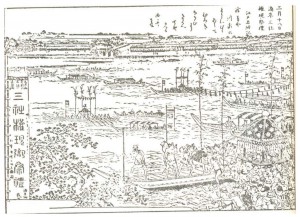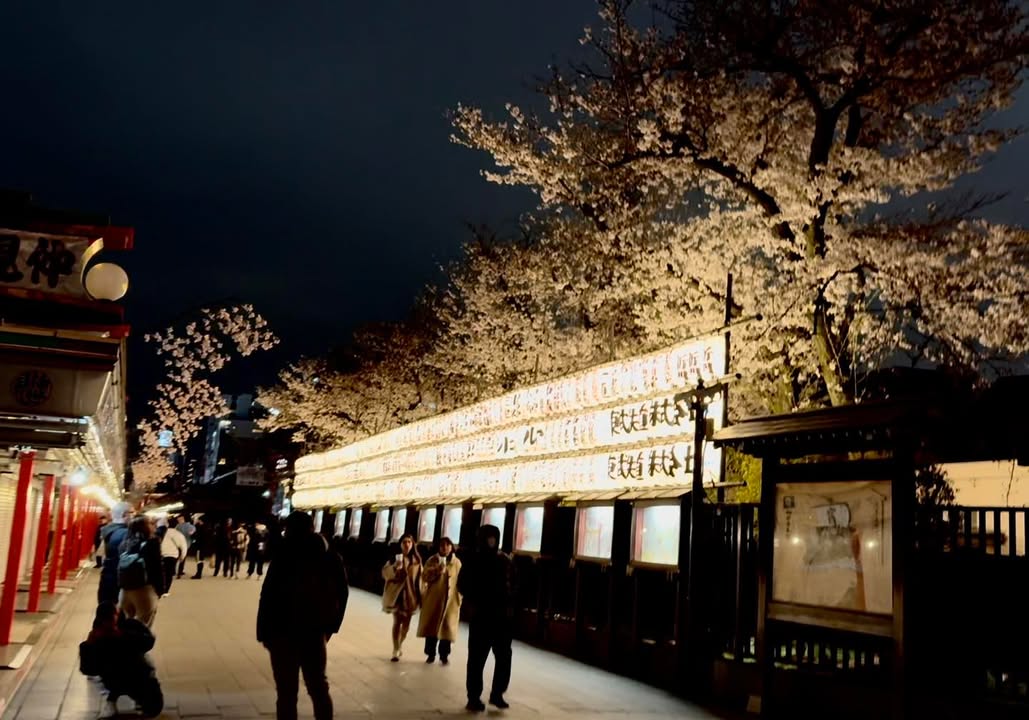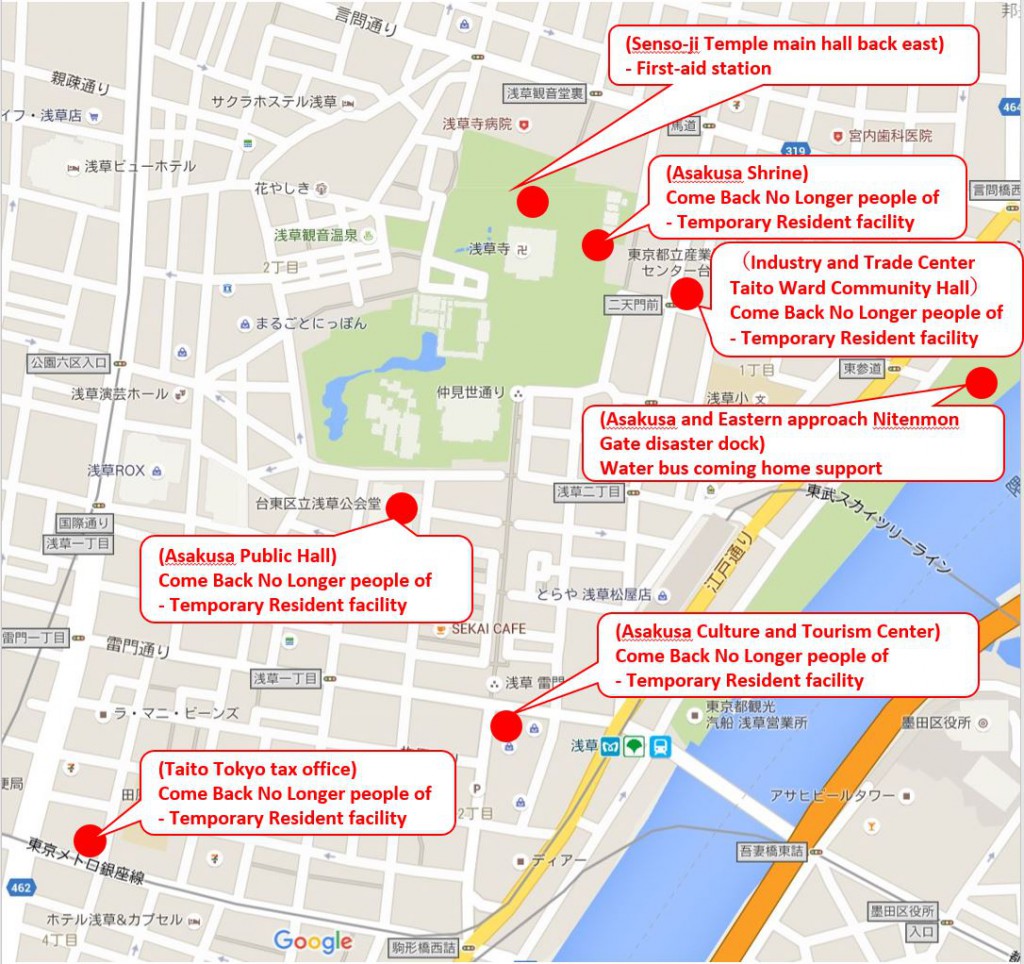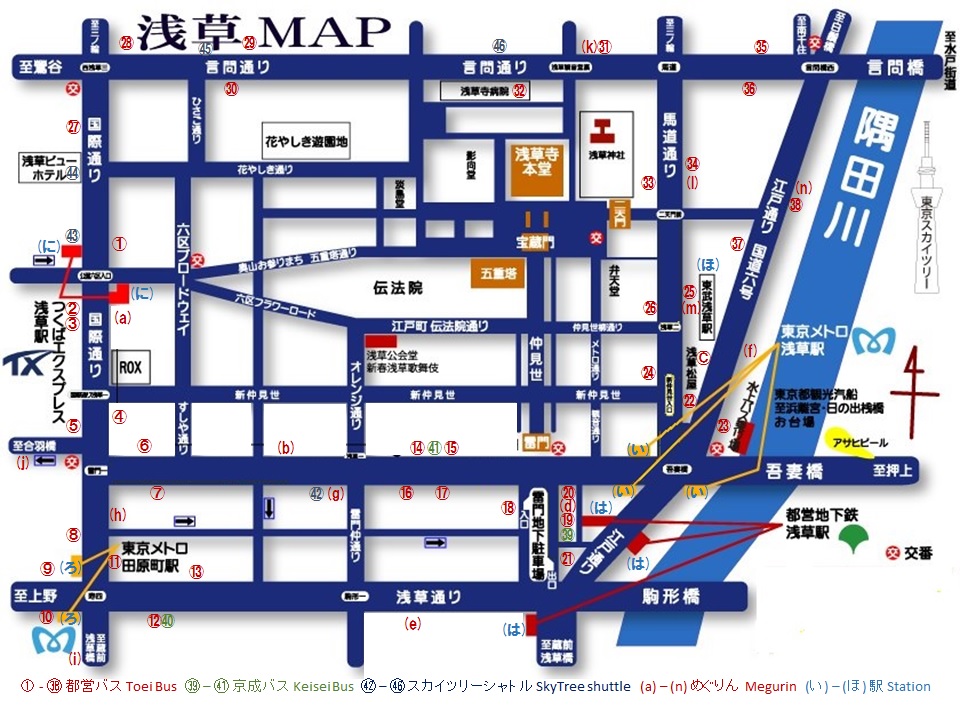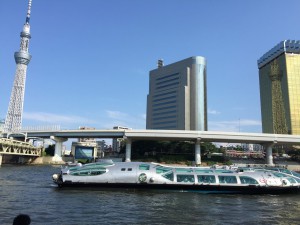History of Asakusa
Early in the morning of March 18, 628, when the capital of Japan was Asuka (present-day Nara Prefecture), two fishermen, Hinokuma Hamanari and his brother Takenari, were fishing in the Sumida River. Suddenly sensing something, they pulled up their net to find a statue of Bodhisattva Kannon. When Haji no Nakatomo, village headman of Asakusa, heard about this, he immediately realized that the object was a statue of the important Buddhist deity Bodhisattva Kannon. Taking vows as a Buddhist priest and remaking his home into a temple, he spent the rest of his life in devotion to Bodhisattva Kannon.
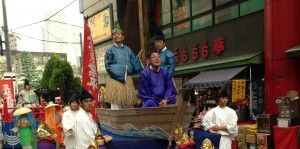
SANJA MATSURI
SANJA MATSURI, which is one of the Three Great Festivals of EDO (now Tokyo), is held on the third Saturday and Sunday every May by the Ujiko ( inhabitants of the neighbouring community) at Asakusa Shirne (previously called “SANJA Daigongen Shrine” ),sacred to the tutelary deity of the locality ,Asakusa. Although the festival seems to date from older times, the presentday from of the festival was established in the Edo period (1603-1868). The parade of the portable shrines is conducted primarily for the mutual amity of the Ujiko and he prosperity of the community but also enjoyed by people other than the Ujiko.


